Ocean Dynamics Zones & Currents

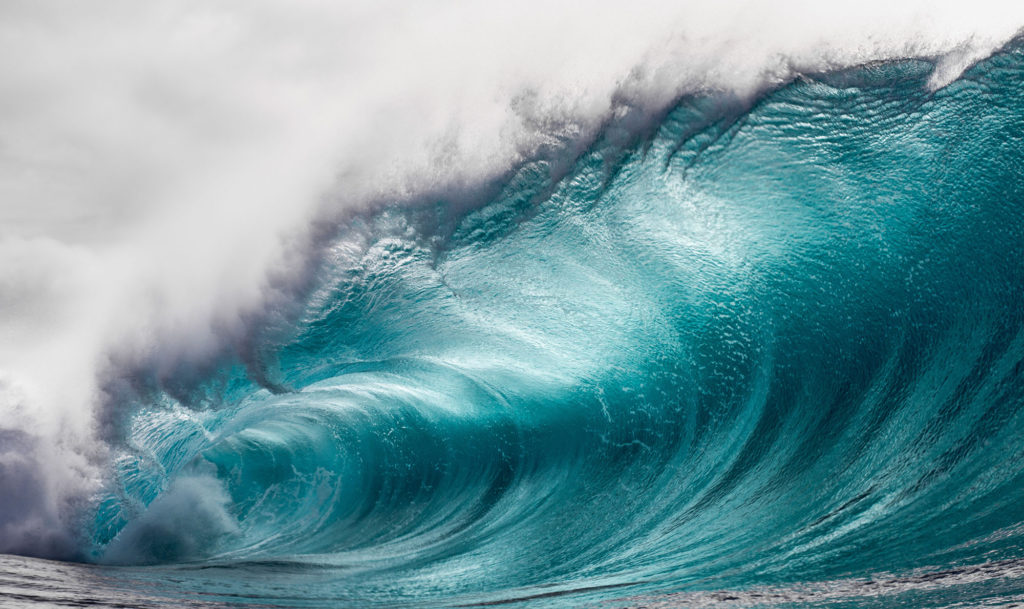
Ocean Dynamics Outcomes
-
List the various ocean zones.
-
Describe the relationship between currents and nutrients.
-
Explain how ocean acidification and climate change can impact ocean organisms.
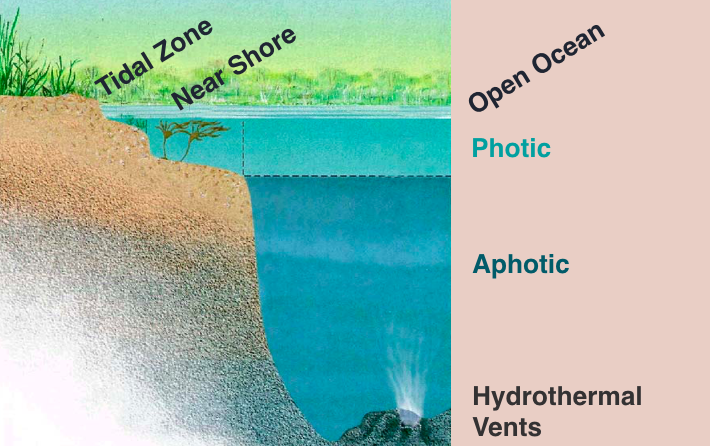
The oceans are primarily classified as \”open ocean\” which includes the sunlit photic zone and the dark aphotic zone. Hydrothermal events are located on the ocean zone deep within the aphotic zone.
Along shore, the tidal zone is underwater at high tide and exposed during low tide. The near shore area is shallow and sunlit, but always under water, unlike the tidal zone. Coral reefs and kelp forests are typically near shore. Tidal zones, coral reefs, and kelp forests are in next week\’s resource.
In the open ocean, photoautotrophs are found in the photic zone. But there is a big potential problem:
Gravity.
Producers need nutrients, and nutrients would potentially settle to the ocean floor, far below most of the producers.
The problem is in part solved by surface currents keeping nutrients suspended near the water\’s surface.
But some nutrients still sink.

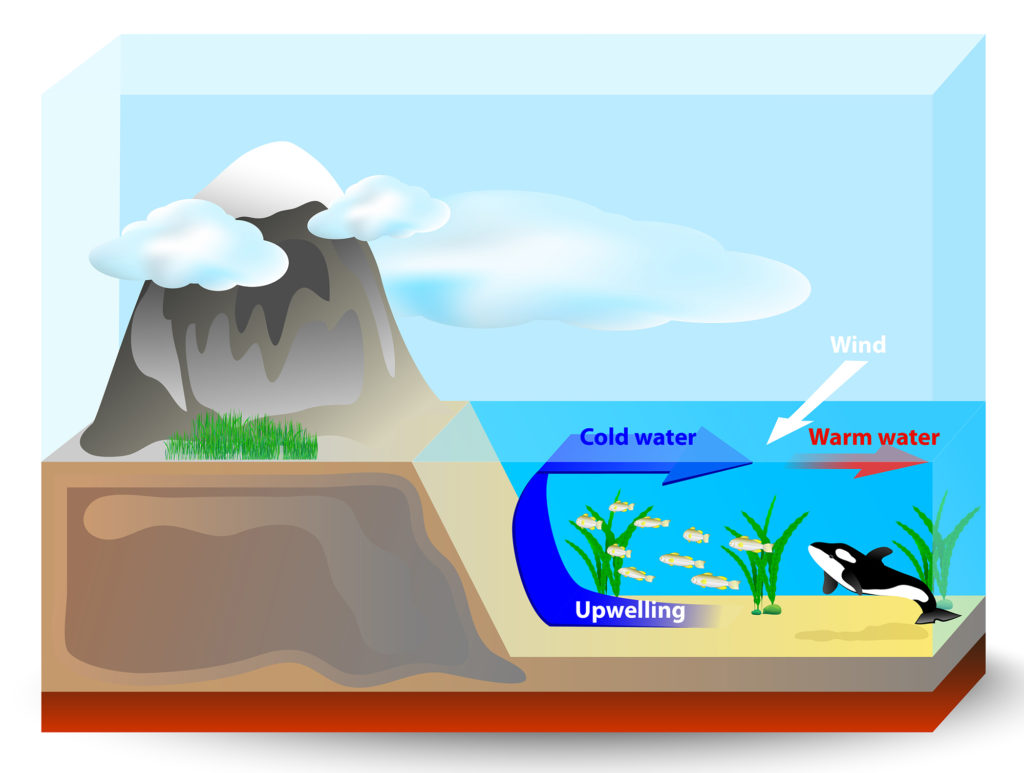
Along continental coasts, upwelling currents that scour the ocean bottom can bring cool nutrient-rich water to the surface. These nutrients are critical for marine producers like algae and photosynthetic bacteria, which are food for higher trophic (feeding) levels.
Upwelling can change when air currents and ocean currents change. The mechanisms that alter currents are not well understood, but it is known that the reduction of upwelling during El Nino events is due to shifts in currents.

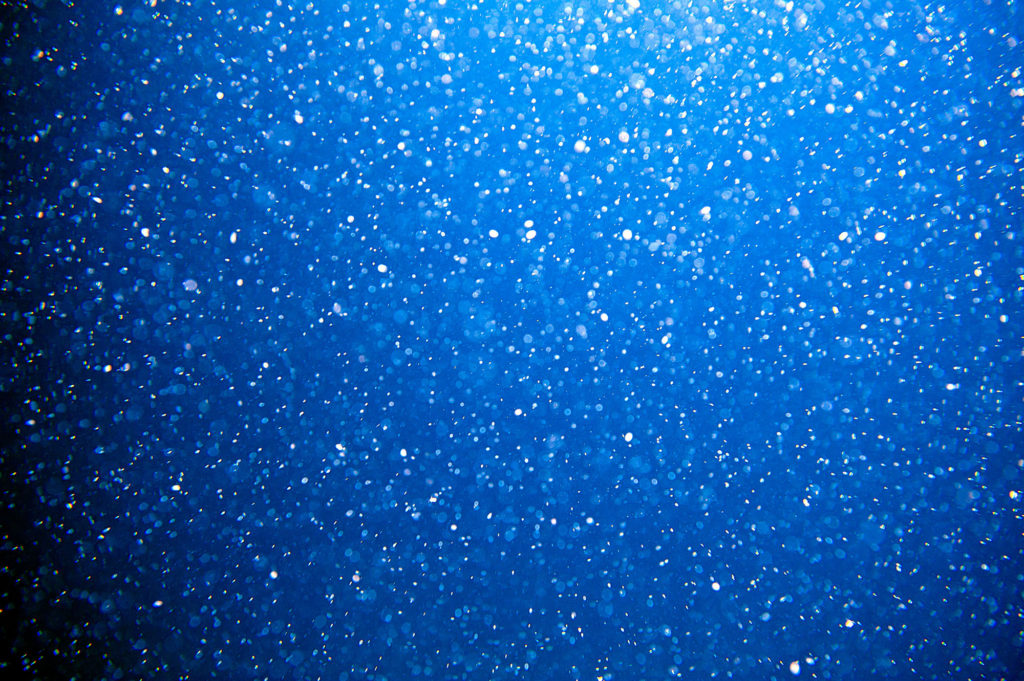
Climate change not only impacts terrestrial habitats, including agricultural lands, it also impacts the ocean in a variety of sometimes surprising ways.
Just like air temperature is increasing overall, but varies up and down in specific regions; ocean surface water temperatures are also generally increasing with variations up and down in specific locations.
Warming temperatures appear to decrease the growth rates of some of the microscopic photosynthetic organisms. If photosynthesis declines in the ocean, which gas would not be pulled out of the water (and atmosphere) at as high of a rate?

Another impact on oceans is increased carbon dioxide dissolved into the water. This can liberate hydrogen ions that react with certain organism structures, including shells.
A decade ago, ocean acidification was relatively unknown; now it is considered to be a significant threat to marine organisms.


Researchers are trying to collect enough data to predict impacts on the largely unexplored oceans, to match data collected on terrestrial and freshwater ecosystems.
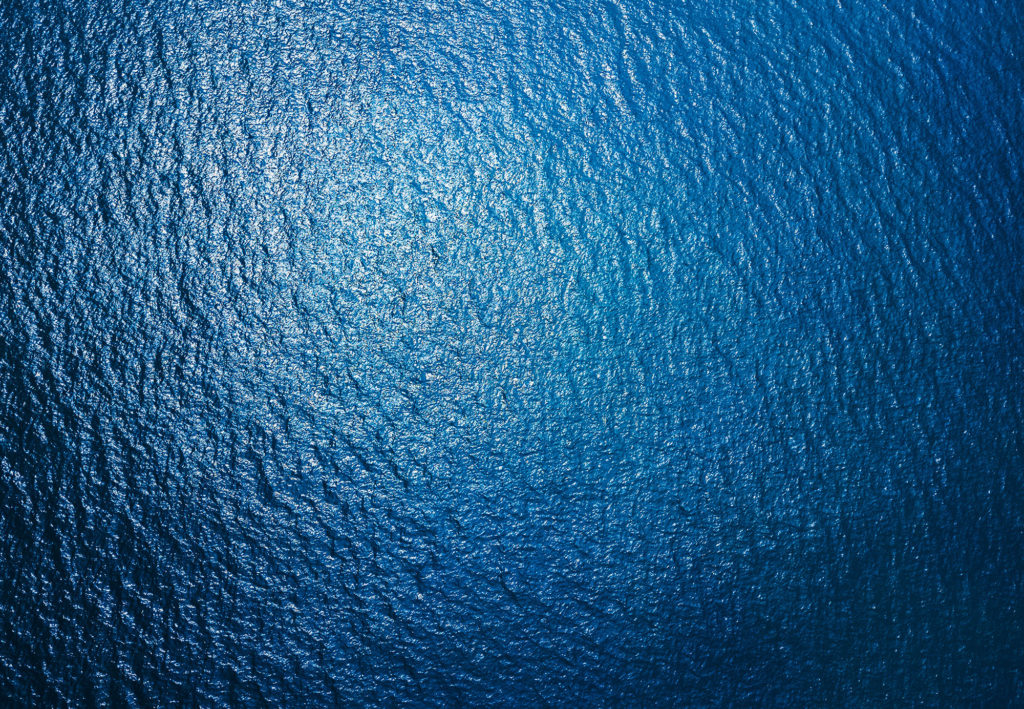
Check your knowledge. Can you:
-
list the various ocean zones?
-
describe the relationship between currents and nutrients?
-
explain how ocean acidification and climate change can impact ocean organisms?